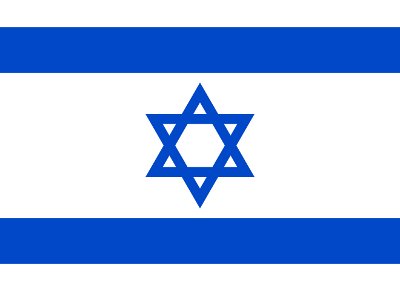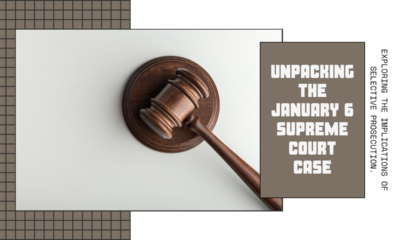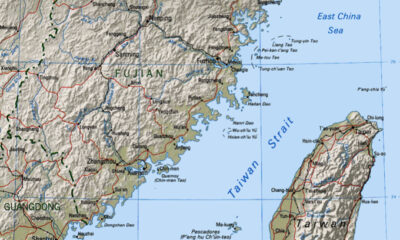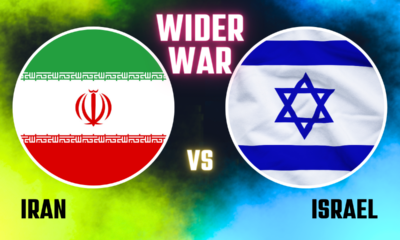Guest Columns
Electoral rules matter

A propos of my previous article concerning Israel’s inept and embarrassing political system, I am republishing a survey of the electoral rules of various countries which remains relevant despite minor changes that have occurred in some of these countries.
Electoral Rules Matter
Chile
In 1970 Chile had three candidates running for president. Socialist Salvador Allende narrowly won over a centrist and a rightist candidate and became president, although he received only 36.3 percent of the total vote. Allende’s electoral platform committed him to carry out extensive social changes. However, his electoral support base was too narrow, and his attempt to make radical social changes backfired. The centrists became alienated and acquiesced in a military coup. The outcome was a bloody dictatorship.
History would have been quite different if Chile had different electoral rules. Chilean tradition demanded that the legislature confirm as president the candidate with the largest number of votes, although Allende was the least desirable of the three candidates for more than half the voters. In some other countries, an absolute majority (that is, more than 50 percent of votes cast) is required for election. A majority can be achieved by having a second round of elections in which only the two candidates with the most votes participate. The outcome might be that the centrist candidate is eliminated, and the voters offered the choice between a rightist and a leftist. If most of the former supporters of the centrist candidate were to switch to the rightist, the rightist could win. Instead of a second round, one can also have one round of elections but ask voters for their second preferences. In this case, the centrist candidate would presumably be the second choice of both leftists and rights, and the country would get a president at least semi-acceptable to everybody.
This is not to argue that one of the possible methods or outcomes I have described is better than the others. The point is that electoral rules matter: with the same distribution of votes, the presidency could go to the leftist, the centrist, or the rightist candidate, depending on the rules.
Weimar Republic
The Weimar Republic’s parliamentary system was based on proportional representation with a low electoral threshold [as in Israel]. It has been argued that Hitler’s ascendancy was helped by this electoral system, which, as one writer has put it, “preserved a maddening profusion of parties and led to a widespread yearning for a strong leader.” Even if the connection between electoral rules and Hitler’s political success is debatable, “the very suggestion indicates that electoral rules might have serious consequences … even for an entire nation, its neighbors—and even the whole world.”
Electoral rules in Israel
Consider the 1992 Israeli elections. The Zionist and religious camp 59 won seats; the anti-Zionist camp won 56 seats. Arab parties won 5 seats. But if the electoral threshold [at the time] were 5% and not 1.5%, no Arab parties and no Oslo! So the electoral threshold is a key factor in determining the policies of a regime.
Israel today is based on the democratic principle of one adult/one vote. It makes no difference whether a person is loyal or disloyal to the regime; he has the same equal right to vote in elections. So, if Arabs become a majority, Israel will cease to be a Jewish state or even a so-called democratic state [which refutes the naive statement of former Supreme Court president Ehud Barak that there is no inconsistency between democracy and a Jewish state].
Unlike some 80 democratic countries, Israel does not have multi-district elections. MKs are not accountable to the voters in constituency elections. If their place on a party list is precarious, they can hop to another party that wants them, which means they can be bought – like Goldfarb was bought for a Mitzubishi in 1992. If it weren’t for Goldfarb, no Oslo, because that gave the Labor party a one vote majority in the Knesset. But if Israel had multi-district elections, it is a virtual certainty that this would not have happened, because Goldfarb would have known in advance that he would not be re-elected. So here is another example of how electoral rules can affect the policies and even the character of a country.
Facts and Fictions
Many Israelis, including academics, believe that such is the smallness of this country, both in population and geographical area, that multi-district or constituency elections are inappropriate. They are wedded to the existing parliamentary system whereby the entire country constitutes a single electoral district in which parties compete and win Knesset seats on the basis of Proportional Representation (PR). This, they believe, enables distinct groups, be they ideological, ethnic, religious, or otherwise to be represented by correspondingly distinct parties in the Knesset regardless of whether the individuals composing these groups are dispersed throughout the country. They contend, moreover, that representation of geographical districts leads to disproportionate representation of diverse groups as well as gerrymandering. Let us distinguish facts from fictions.

Bill Clinton, Yitzhak Rabin, and Yasser Arafat at the White House, 13 September 1993. Photo: Vince Musi/The White House
Contrary to its supporters, proportional representation of distinct groups in a single national district election does not ensure a party’s fidelity to its campaign pledges. In the 1992 election campaign, the Labor Party’s platform rejected recognition of, or negotiation with, the PLO, as well as withdrawal from the Golan Heights. Once in office, however, Labor betrayed the voters. So did the Shas Party, which declared, in that 1992 campaign, that it would not join a Labor-Meretz coalition. Much the same may be said of the Likud in 1996. When Prime Minister Netanyahu declared on CNN that no one ever expected him to accept the Oslo Accords as a basis for the “peace process,” or meet with Yasser Arafat, or withdraw from Hebron, he unwittingly admitted that he had betrayed the expectations of those who voted for him. So much for the blessings of proportional representation in the absence of multi-district elections.
The fact that some 80 democracies somehow manage to conduct the public’s business by means of multi-district elections should dispel the fiction that Israel cannot function well or justly without its existing parliamentary electoral system, where fixed party lists compete in a single country-wide election. The truth is that 68 years of this “system” has engendered the shoddiest politics, culminating in the 1999 elections when 29 Knesset Members hopped over to rival parties in order to obtain safe seats.
[ezadsense midpost]
Hardly anyone seems to recognize the fact that a heterogeneous country such as Israel, where the entire country constitutes a single electoral district, is doomed to political ineptitude and anarchy precisely because its political parties will be more or less linked to distinct ideological, ethnic, or religious groups. The Government or Cabinet formed as a consequence of Israel’s parliamentary electoral system will seldom be capable of pursuing rational and coherent national policies. For example, Israel has a variety of competing school systems: the state system, the state-religious system, the Tami school system, the “independent” Haredi system, the Ma’ayan (Shas) system, etc.
Each of these systems is linked to a particular political party or social movement. This politicization of the schools has pernicious consequences. As one commentator has noted, the Education Ministry’s allocations are based on political power rather than educational criteria. Moreover, when one political group succeeds in obtaining a larger slice of the education budget for its constituents, other groups bitterly complain that this has come at the expense of their children. The politicized nature of the schools thus breeds inter-communal hatred and rivalry.
Overlooked, however, is the fact that Israel’s parliamentary electoral system contributes to this malignant state of affairs. Suppose Israel had multi-district elections. The country would then be divided into several geographical electoral districts. Let us assume that most of these districts will be heterogeneous. Those elected in such districts will then have to represent a variety of opinions and interests rather than a single-issue group. This will put an end to single-issue parties and their narrow-minded politicians.
Israeli politicians are often faulted for their lack of national vision. Hardly anyone sees the connection between this narrowness and Israel’s parliamentary electoral system—and this, quite apart from the narrow-mindedness produced by Israel’s 3.25% electoral threshold. That some 80 democracies shun this electoral “system” is no accident. In this case, Israel would do well to imitate the “goyim”!
A profusion of electoral systems exist. The simplest is the single-member district with plurality rule (SMDP). The candidate receiving the most votes in the district wins. Opponents say SMDP disenfranchises minorities. This is rhetoric. First of all, the individuals composing “minorities” not only vote, but they also have the opportunity to lobby their district’s representative. Second, experience in the US indicates that minorities are not ignored by congressmen, especially in closely contested districts.
It can also be argued (as previously suggested) that SMDP requires elected official to represent diverse opinions and interests, which can enlarge their intellectual horizons. Even if it is true that SMDP disproportionately represents diverse groups, it is also true that PR with a low electoral threshold multiplies small parties, paralyzes governments, such that minorities themselves suffer as a consequence. And it bears repeating that Israel’s parliamentary system enables parties to ignore their voters with impunity.
In any event, SMDP is employed in no less than 22 countries, including Canada, the United States, and Great Britain. Of these 22 countries, 16 have smaller populations than Israel: Bahamas, Barbados, Belize, Botswana, Dominica, Gambia, Grenada, Jamaica, Micronesia, New Zealand, St. Kitts & Nevis, St. Lucia, St. Vincent, Samoa, Trinidad & Tobago, and Zambia. The geographical area of 14 of these countries is smaller than Israel.
Of course, single-member districts with plurality rule is not the last word. Some 54 countries employ other methods of representing constituents. Districts may have more than one representative, as in Australia; they may have run-off elections to obtain a majority candidate, as in France; and they may even combine SMDP for part of the legislature and PR for the remainder, as in Germany.
Of the 54 countries having PR, 12 have smaller populations than Israel: CAPE VERDI, Costa Rica, Denmark, Finland, Honduras, Ireland, Liechtenstein, Lithuania, Luxembourg, Malta, Norway, Uruguay. The geographical area of 4 of these countries is smaller than Israel.
We see, therefore, that 28 countries have smaller populations than Israel, and of these, 18 are smaller in area. This should dispose of objections to multi-district elections on the basis of a country’s population or size. I might also add that many countries are as heterogeneous as Israel.
The Preferential Vote Systems
The “Preferential Vote,” is used in Australia, Ireland, Malta, and elsewhere. Here is how it works for Australia’s House of Representatives. As in single-member plurality elections, elections are held in single-member districts, but the voter is required to rank all candidates seeking election, from first to last. “The returning officer first sorts the ballot papers according to which candidate is ranked first. If at this stage any one candidate has a majority of the votes, he is declared elected. Otherwise, the candidate with the fewest first-place preferences is declared defeated. The returning officer then transfers the votes of the defeated candidate’s supporters to whichever of the remaining candidates they have marked as their next preference, again checking to see if any candidate has achieved a majority of all the votes. This process continues until some candidate does attain a majority, whereupon he or she is declared elected.”
Of relevance to Israel, the Preferential Vote system “allows small parties to document their contribution to a large party’s success. It is thus possible, even for parties that virtually never win seats on their own, to play a significant role.” In fact, by issuing “how to vote cards,” urging its supporters to adopt a particular ranking of candidates below first, a minor party can be instrumental in deciding which major party shall head the government!
“Personalized Proportional Representation (PPR).” For example, in Germany the voter is given two votes, one for an individual candidate and one for a party list. The candidate vote is for a single-member district contest that is won by a plurality. The second vote, however, is for a party list, and is used to provide compensatory seats to those parties which did not receive in the single-member districts the seat share proportional to their nationwide vote share. (Actually, much the same result can be achieved with a single vote, as in Denmark and Sweden.)☼
[ezadsense leadout]
-

 Executive3 days ago
Executive3 days agoJanuary 6 case comes down to selective prosecution
-

 Executive2 days ago
Executive2 days agoBiden ballot woes continue
-

 News3 days ago
News3 days agoRolling the Dice on Republicans: Has the Right Become Delusional?
-

 Executive2 days ago
Executive2 days agoWhy Fatal Police Shootings Aren’t Declining: Some Uncomfortable Facts
-

 Civilization2 days ago
Civilization2 days agoPresident Biden Must Not Encourage Illegal Mass Migration From Haiti
-

 Constitution2 days ago
Constitution2 days agoEquality Under the Law and Conflicts of Interest in New York
-

 Civilization3 days ago
Civilization3 days agoBiology, the Supreme Court, and truth
-

 Guest Columns2 days ago
Guest Columns2 days agoWhat Was Won in No Labels’ Crusade










Si Lent Cal liked this on Facebook.